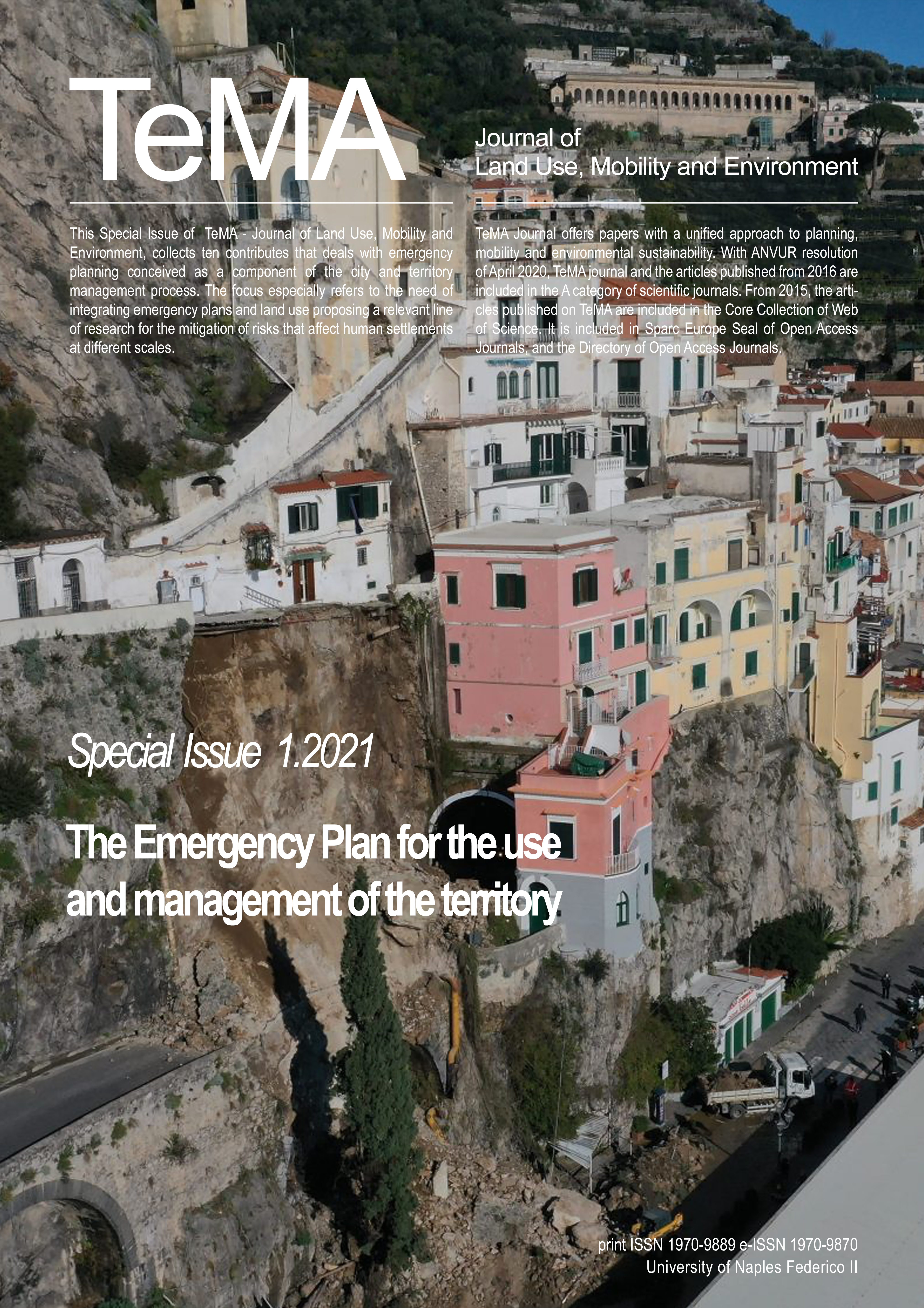The emergency plan for the use and management of the territory
Abstract
The issue of emergency planning in areas exposed to natural hazards cannot yet be considered as a focus within the scientific literature, probably because it has been judged as “too operative” for the interest of academic research. The topic of land use planning, spatial planning, and urban planning in risky areas, conversely, has gained attention in recent years. Nevertheless, the examples of good practices that involve ordinary master plans embedding mitigation concerns are still limited.
Downloads
References
Bettini V., 2014, Ecologia urbana. L’uomo e la città. Torino: Utet Libreria.
Bullock, J. A., Haddow, G. D., & Coppola, D. P. (2017). Introduction to emergency management. Butterworth-Heinemann.
Colucci A., 2012, Le città resilienti: approcci e strategie. Università degli studi di Pavia: Jean Monnet Centre.
Holling C. S., 1973, «Resilience and Stability of Ecological Systems». Annual Review of Ecology and Systematics, 4:1-23. Doi: 10.1146/annurev.es.04.110173.000245
Jabareen Y., 2012, «Planning the resilient city: Concepts and strategies for coping with climate change and environmental risk». Cities, 31:220-229. Doi: 10.1016/j.cities.2012.05.004
Lindell, M. K. (2013). Emergency Management. In: Bobrowsky P. (ed.), Encyclopedia of Natural Hazards, Springer, Dordrecht, pp. 263-271.
Molavi, M. (2018). Measuring Urban Resilience to Natural Hazards. TeMA - Journal of Land Use, Mobility and Environment, 11(2), 195-212. https://doi.org/10.6092/1970-9870/5485
UNDRR (2014). Sendai Framework for Disaster Risk Reduction 2015-2030. Available at https://www.undrr.org/publication/sendai-framework-disaster-risk-reduction-2015-2030.
UNDRR (2015). Disaster resilience Scorecard for cities. Available at https://www.unisdr.org/campaign/ resilientcities/toolkit/article/disaster-resilience-scorecard-for-cities.
Authors who publish in this journal agree to the following:
1. Authors retain the rights to their work and give in to the journal the right of first publication of the work simultaneously licensed under a Creative Commons License - Attribution that allows others to share the work indicating the authorship and the initial publication in this journal.
2. Authors can adhere to other agreements of non-exclusive license for the distribution of the published version of the work (ex. To deposit it in an institutional repository or to publish it in a monography), provided to indicate that the document was first published in this journal.
3. Authors can distribute their work online (ex. In institutional repositories or in their website) prior to and during the submission process, as it can lead to productive exchanges and it can increase the quotations of the published work (See The Effect of Open Access)

